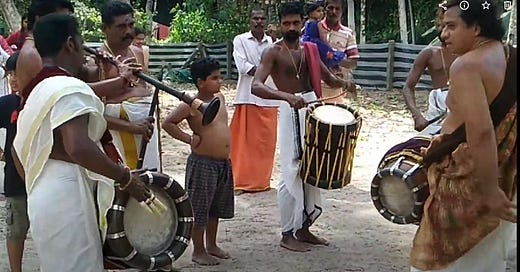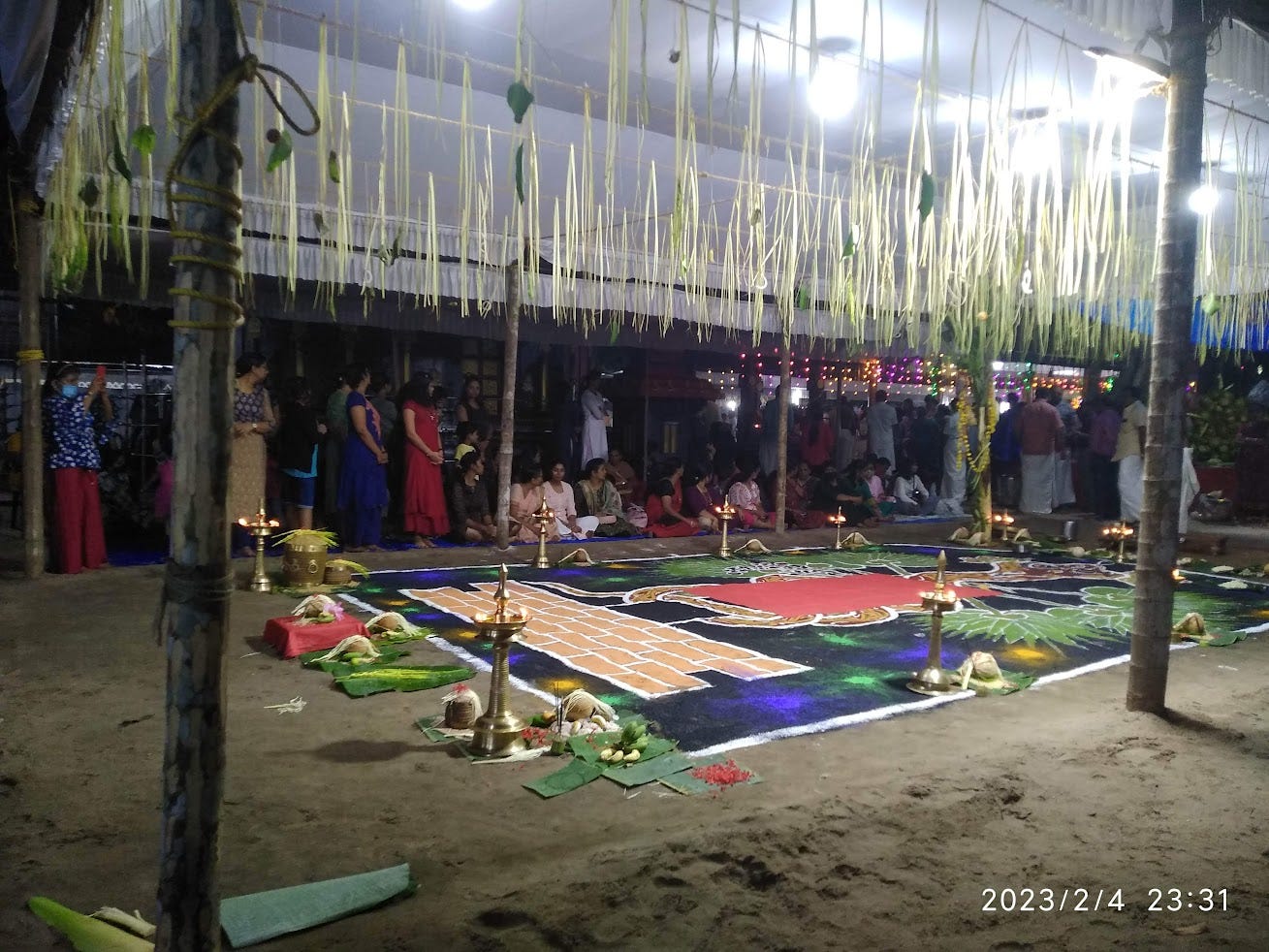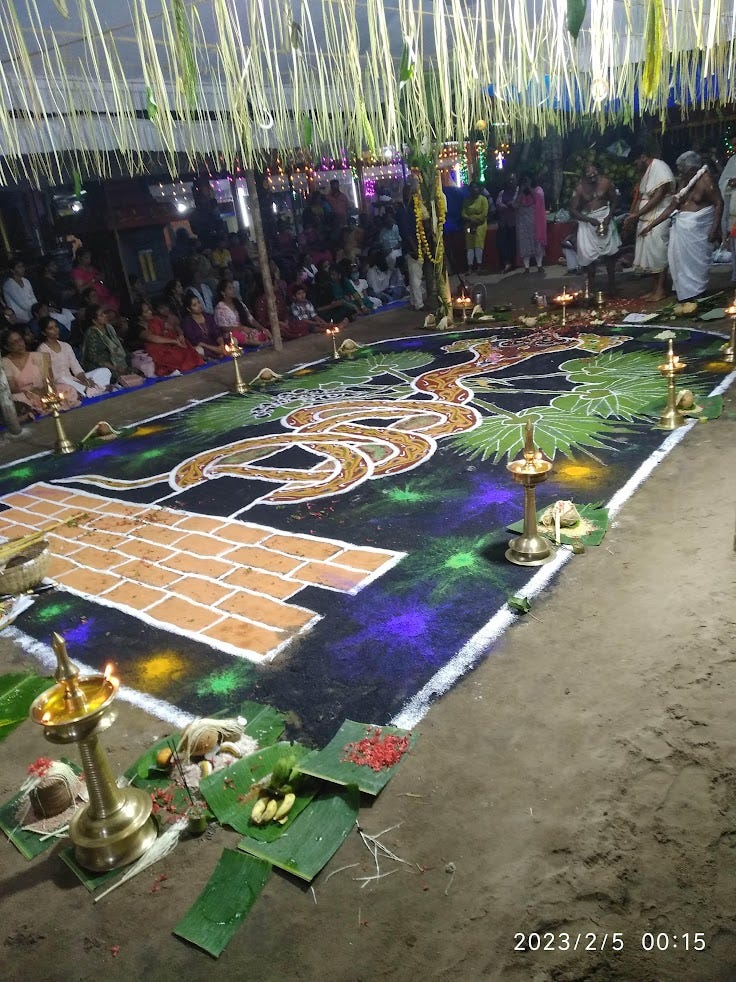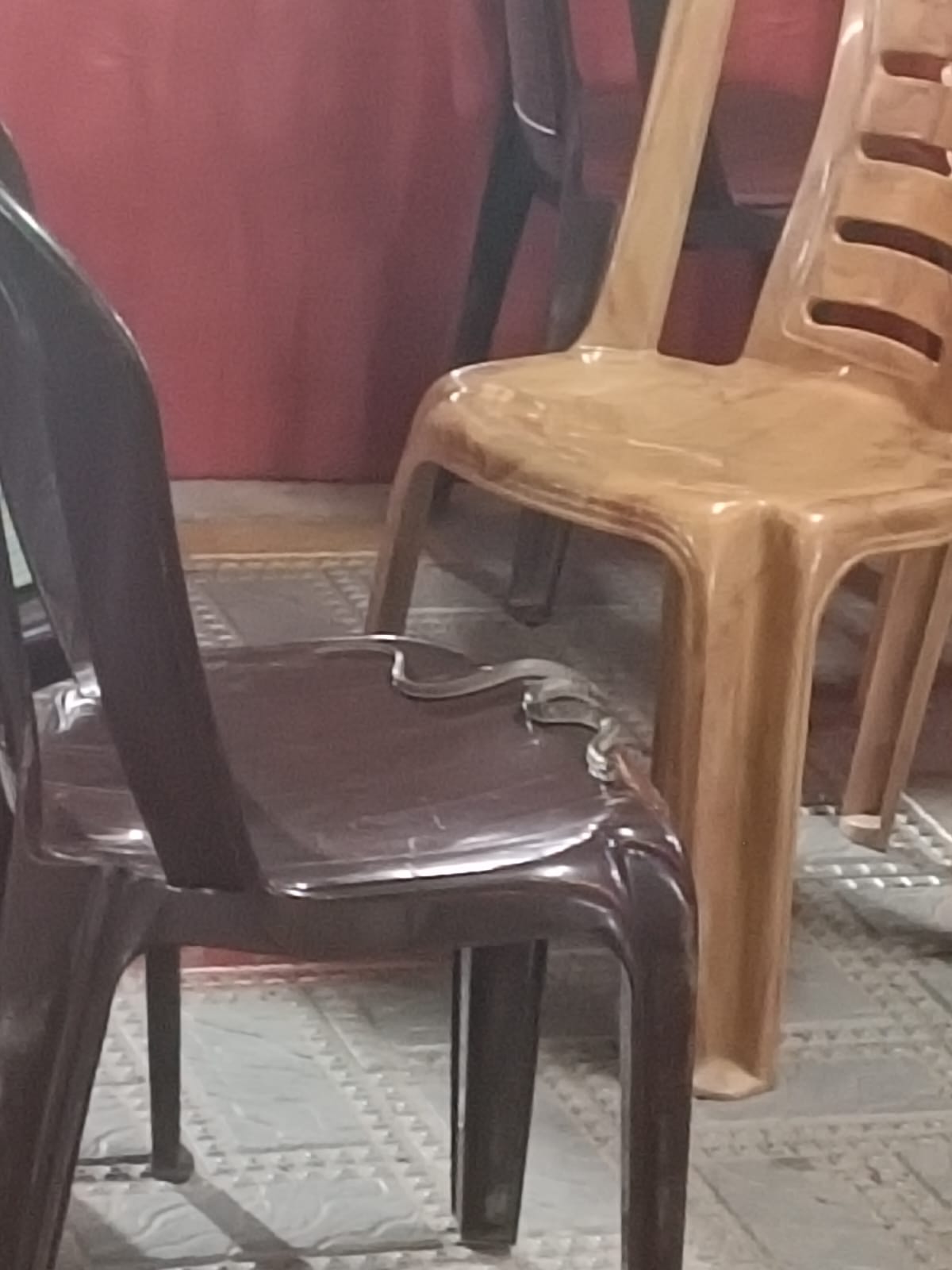Kerala has a long tradition of Naga (sarpa, serpent) worship, as has also been the case in some parts of the Northeast. There are sarpa kavu or untouched patches of virgin forest, where serpent deities reside. There are large temples, for example Mannarsala, where childless couples make offerings to gain the boon of a baby: Nagas are believed to grant fertility.
The Theyyams of Malabar, as well as the bhoota kola of neighboring Tulunadu, celebrate the autochthonic deities of the region. As in the superb film Kantara and to a lesser extent in the film Malikappuram about a girl-child who is an ardent devotee of Swami Ayyappan of Sabarimala, the deities of the land are a powerful presence in the daily lives of the faithful.
In Kantara the traditions are presented with neither explanation nor apology: they just are. In Malaikappuram, which is a very good film as well, there is a bit of a tendency to ‘explain’ away mystical and spiritual experiences in ‘modern, scientific’ terms (which Kantara wisely refrains from, and that is a major part of its charm).
There are traditions where the deities physically inhabit the faithful who have been chosen and undergone the required purification rituals, and the faithful have experiences that are not necessarily amenable to rational, scientific explanation: which probably just means that science hasn’t caught up with tradition. The oracle-like velichapads of Kerala, the oracular vestal virgins of ancient Greece, and the spirit dancers of the bhoota kola are examples.
So are the Nagaraja, Naga Yakshi, Sarpa Yakshi, Mani Nagam, Kari Nagam, Kuzhi Nagam and Kanyavu of the sarpam thullal that I attended at the family temple of some relatives in Alappuzha district in Kerala. They are chosen from among the matrilineal descendants of the family. Apart from the Nagaraja who is a male, the others are all female, and the Kanyavu is a pre-pubescent girl-child.
In passing, matriliny/Devi worship and Naga worship appear to go hand in hand.
I had seen videos of and listened to the hypnotic music of the sarpam thullal before: it is easy to imagine being induced into a trance while listening to it. But this was the first time I was fortunate enough to see it.
The ‘penitents’ stay in the temple for a week or so. (I am reluctant to use that term because they are not sinners, but rather the chosen few who are fortunate enough to experience the rituals first hand. But that seems to be the closest term in English. I think I’ll instead use the neutral term ‘Naga dancers’ for them.) They undergo purification rites (kappu kettu), perform ritual vrtam, and are put on a special sattvic diet that excludes salt or spice.
In addition, there are piniyal (literally minions), other family members who are not part of the thullal itself, but whose duty it is to protect the vulnerable Naga dancers who do enter into a trance-like state and are unaware of their surroundings as they sway to the music. The piniyal do not have to stay in the temple but do undergo the same vratam.
This particular sarpam thullal is conducted once every three years, and it goes on for three days at the temple, which was cleaned up, the surroundings cleared of vegetation, and lit up with bright lights. There are several thullals a day: late morning and/or late afternoon and late night. I attended the second day’s events, afternoon and night: it went on till two in the morning.
The entire function is orchestrated by a Pulluva chief, a tribal man who has a traditionally strong connection with Naga deities. In most temples in Kerala, there is a subsidiary shrine for the Naga deities, and on auspicious days, especially the ayilyam (ashlesha) nakshatra which is associated with Nagas, a Pulluva singer will sing an invocation for you, playing his violin-like instrument that is the basis of the thullal music, which also includes a deft chenda drum orchestra and nadaswaram pipes.
A major part of the thullal is the creation of the kalam or the drawing on which the naga dancers perform their dance, swaying to music. This is done in a custom-built pandal (covered temporary structure decorated with young coconut leaves). Using vegetable dyes, the Pulluva can quite amazingly create a beautiful and complex drawing in a couple of hours, with a Naga theme. Sadly, it is ephemeral, because the dancers will destroy it shortly thereafter.
These photos are of a kalam in the shape of a serpent coiled around a black palm tree (karimpana), with various Naga dancers in the foreground, getting ready for the thullal.
The dancers are brought to the kalam after an invocation ceremony and obeisance to the deities. They do a circumambulation of the kalam, and then they are given a bunch of tender florets of the arecanut tree, which they hold to their faces. Apparently the fragrance of the florets helps induce the trance state, and then they move to the kalam and start swaying rhythmically to the music, which waxes and wanes in a sinuous manner in a metaphor for a serpent’s motion.
As they move around, the dancers appear to become more and more detached from their normal, daily selves, and more and more involved in the trance state. Their movements become more uncontrolled, and their eyes and expressions take on an other-worldly hue. They are liable to hurt themselves by hitting the pillars of the pandal, or falling into the audience crowding around. So their piniyal form a protective cordon, linking arms, so that the dancers are safe.
They are given tender coconuts to refresh them while they dance. Sometimes they seem to be searching for someone in the audience. They may choose a person, and summon them to give them a tender coconut, in what is considered a blessing. Indeed, the dancers look mesmerized. I was told by a niece that a few years ago, she was watching the dance, and suddenly she felt the uncontrollable urge to join the dancers herself, and so she did.
After dancing the kalam to dust, the dancers then run to the sarpa kavu (sacred grove) and the nearby temple pond, where they immerse themselves, again with the piniyal joining them to ensure they don’t harm themselves. I watched the young Nagaraja run with astonishing speed to the kavu, so fast that his piniyal couldn’t keep up. He crashed into a tree and I was afraid he might have suffered a concussion. But doctors examined him, and he was fine.
In our case, the Naga dancers included several young women, a middle-aged woman who had come all the way from the US, the teenaged Nagaraja, and the 9 year-old girl Kanyavu. I noticed that the Kanyavu was reluctant to participate. She stood aside, looking confused. But on the final day, she suddenly danced with full enthusiasm.
After their visits to the kavu and the pond, the Nagas, now soaking wet, come back to the kalam pandal, and after some further ceremonies, that thullal is over, and they go back to their temporary accommodation in the temple. There are two or three thullals a day, and it obviously physically taxing for the Nagas, as well as for piniyal. The most elaborate one is at night and it goes on well into the early morning, say 2am.
I was present for the afternoon and night thullal on the second day. I should have been there for the third and concluding day, but I had to leave. So I was watching the live broadcast of the event around 11pm, and then there was a commotion among the ladies sitting on mats on the ground next to the kalam.
It was because a small serpent was sinuously wending its way towards the main temple steps.
This was astonishing. It was a finger-sized serpent about 3 feet in length, with a silvery spotted body. It went as far as the steps to the main Mahadeva shrine, in front of which the kalam pandal was, and remained there for a while.
Then it slithered up the back of a plastic chair, coiled itself around it, and remained there for the rest of the thullal until the final ceremony.
Someone brought the serpent a little nurum palum on a banana leaf: this is the mixture of milk, turmeric etc that is the main offering at Naga ceremonies. The serpent appeared to take a few sips of this.
Let us remember that all this happened in a place where the entire vegetation had been removed using a JCB backhoe just a week or two prior. There were a couple of hundred people sitting or milling around the pandal. There was deafening amplified music from the chenda orchestra. None of this seemed to deter the serpent. After the final ceremony where the Naga dancers return to their normal lives (kapp-azhippu), it disappeared below the roots of one of the nandyar-vattam medicinal plants around the temple, without any fuss.
I had heard from a relative that a few years prior, three serpents had come to this thullal. To be honest, I was skeptical: why would serpents, which try to avoid humans, come to such a loud ceremony? Then I saw a video of a recent thullal in another temple in Alappuzha, where again a finger-width (but this time golden-colored) serpent had arrived, stayed, and then disappeared.
But the fact that I was seeing this in real time (albeit on video feed) was staggering. None of my rational, scientific beliefs could explain what had happened: why on earth did this serpent appear and seem to be unperturbed, and even enjoy the ceremony? I have no answer. The only thing I can think of is Kantara’s premise: there are spirits and demi-gods all around us, if only we learn to look.
There is the belief that the real Nagas (such as the slender silver- and gold-colored ones I saw in videos) are not the same as the usual snakes one encounters. These are special, with semi-divine attributes, and they are the ones that accept our offerings.
One of my favorite writers, the brilliant Malayalam fabulist O V Vijayan, once explained to me his short story The Little Ones, about benign ancestral spirits that appeared as points of light in the sky when the family was going through troubles. It’s the same idea: unseen, unknown and often benign (presumably there are malign ones too) powers that we are only dimly aware of.
I had wanted for years to see a sarpam thullal, because of the hypnotic quality of its music that I had heard, and because of the connection between matriliny, Devi worship and Naga worship that were all hallmarks of Hindu Kerala society for long. It is my theory that these, along with ample monsoon rains and the rice and spice trade, had enabled Kerala, especially Travancore, to be a fairly prosperous tropical paradise.
Now that I have seen the thullal, I am even more in awe of my ancestors, who knew a thing or two: they had some of the most accurate calendars in the world; in the 14th century CE, Kerala mathematician Madhava of Sangamagrama discovered rapidly converging infinite series for trigonometric functions (the basis of calculus and of navigation across the open ocean). As early as the 2nd century BCE, Pliny the Younger was complaining that Roman coffers were being emptied for the spices of Kerala, especially pepper.
We must try to understand why our long-standing traditions have survived. Lindy, as Nassim Taleb would say: they survived because they have meaning, and value.
1950 words, 13 Feb 2023


















Share this post